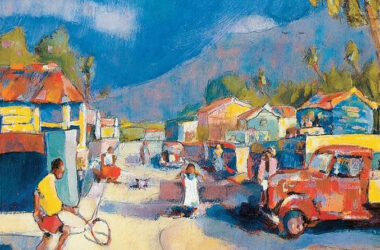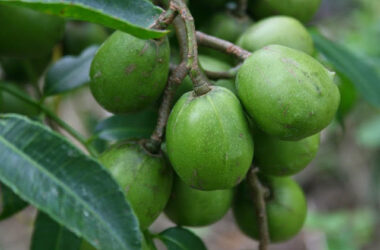“Water is life” and this week we celebrate life in its entirety. We wish to engulf you in the Caribbean’s Waters, wetting your appetite for adventure. In the region, we are undeniably wet with untouched springs, sprouting waterfalls, and rivers which accentuate the region’s rich biodiversity. Dominica is the isle of many rivers – 365. Many tales from Dominica reveal that each river was closely linked to a day in the calendar year – days when families would gather for rural, rustic adventures. Dominica is also home to majestic waterfalls and some of the most unique landforms. It is therefore no accident that the nature isle is one of the region’s major producers of bottled water.
Martinique and Guadeloupe do not possess as many water bodies as Dominica. The mountainous terrain of these French islands has given birth to numerous small rivers and streams; water collection souvenirs which feed the dense, lush vegetation of these islands. While the water industries in Martinique and Guadeloupe remain modest in their economic and industrial stature, Dominica’s industry flourishes in an environment which places emphasis on sustainable development.
Is there any benefit to placing water in labeled bottles? One may not grasp the affluence in such a process but bottled water undoubtedly contributes to the local economy. One of the most recognized benefits is the opening of the doors of entrepreneurship. The ripple effect… job creation, and opportunities to source new markets.
Happenings
WASCO has issued an alert for drought conditions in Saint Lucia. This implies that we should ensure that water is conserved. Here are some practical guidelines:
Install Water-Saving Showerheads, Shower Timers, and Low-Flow Faucet Aerators
Turn Off the Water After You Wet Your Toothbrush
Always turn taps off tightly so they do not drip
You can reduce water usage by 40 percent or 50 percent by installing low-flush toilets.
Repair leaks promptly.
Neighbourly GetAways
Management of water and aquatic environments in Guadeloupe is very delicate. Out of the 32 rivers in Guadeloupe, 29 are used for the production of drinking water. Potable water in Guadeloupe is made available via surface water, ground water and seawater desalination. In the name of green tourism and natural areas, the General Council in partnership with the National Parks invested some 400,000 euros in initiatives which seek to improve over 40 hiking trails in different communities. Partner with the guidebook “Trekking Guide” found on ports of embarkation and promote the discovery of natural sites within the archipelago. If “island hopping” takes you to Dominica, take some time to enjoy the cool waters of the rural rivers. After your encounter with the cool life-giving spring, take a trip to Grand Soufriere Sulphur Springs where healing waters soothe all ailments – physical or psychological. Take a friend and enjoy the act of healing – West Indian style! In Martinique, we invite you to take a drive on Route de la Trace – known locally as the island’s most scenic drive. Enjoy the curvy terrain up a winding road with a panoramic view of Martinique’s landscape.
Historical note!
According to Office de L’eau (of water) Guadeloupe, only 12 communes are licensed to provide potable water to the public. Get to know your neighbours!
A bit of the French for the Visitor
L’eau potable/Potable water
I am thirsty
J’ai soif
Drink/beverage
Une boisson
Soda/soft drink
Une boisson gazeuse
A hot chocolate
Un chocolat chaud
A coffee
Un café
Tap water
Eau du robinet
Still water
Eau plate
Juice
Le jus
Iced tea
Le thé glacé
Milk
Le lait
Herbal tea
Une tisane
Wine
Le Vin
Lemonade
Un citron pressé
beer
Une bière
Champagne
Le champagne
Tea
Le thé





